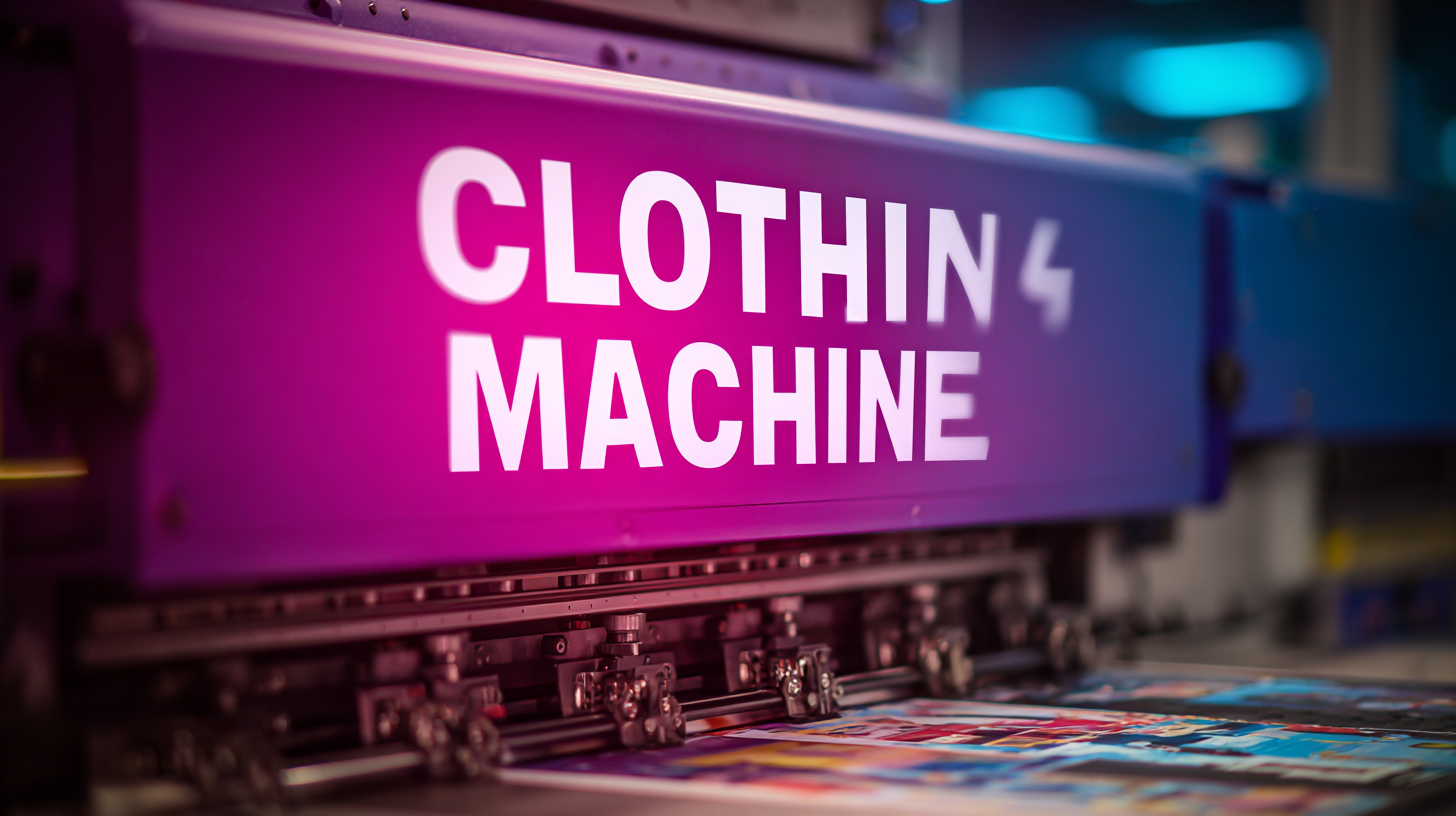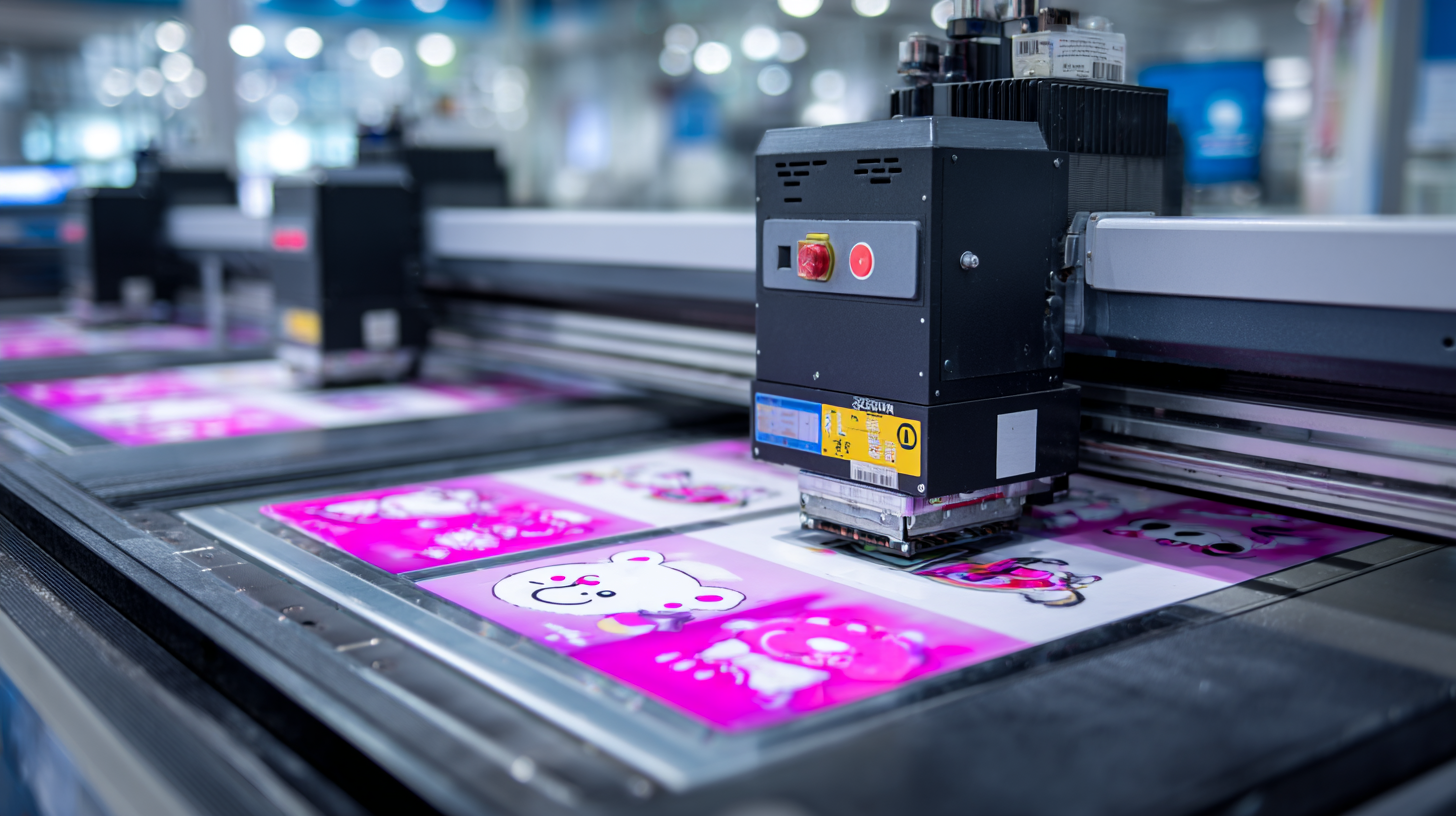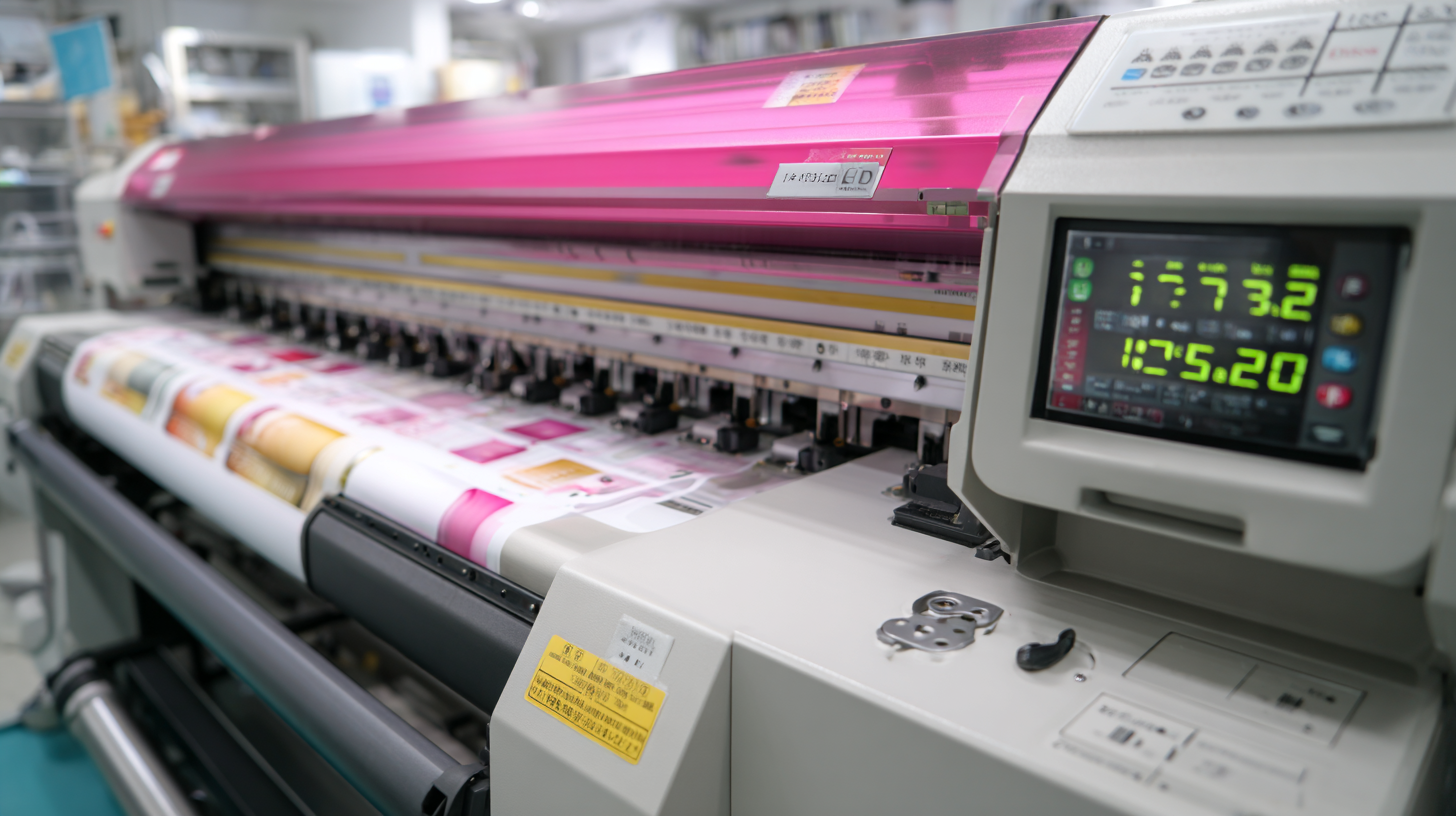In the ever-evolving world of textile manufacturing, the significance of high-quality Clothing Printing Machines cannot be overstated. According to a recent report by Smithers Pira, the global digital textile printing market is projected to reach $5.5 billion by 2026, driven by increasing demand for customized and on-demand fabric applications. However, the initial investment in these advanced machines can be substantial, making it essential for businesses to focus not only on the initial purchase but also on the long-term savings that come from superior after-sales service and repair insights. By implementing top strategies for maintenance and support, companies can significantly prolong the lifespan and efficiency of their printing machines, ultimately enhancing their return on investment. This blog will delve into the best practices to unlock long-term savings, ensuring that businesses are well-equipped to thrive in a competitive market.

Investing in quality clothing printing machines is critical for businesses looking to maximize their return on investment (ROI). The key factors that influence this decision extend beyond the initial purchase price. When evaluating potential machines, businesses should consider the efficiency and speed of production, the versatility of printing options offered, and the overall durability of the equipment. A reliable machine not only reduces downtime but also enhances productivity, leading to greater profitability over time.
Moreover, after-sales service and repair insights play a vital role in ensuring the longevity of your investment. Quality machines should come with robust customer support and readily available spare parts. Understanding the manufacturer’s warranty and service policies can provide peace of mind and protect your investment against unforeseen breakdowns. Engaging with service professionals who are knowledgeable about the specific equipment can also lead to valuable insights for maintenance, ensuring the machines continue to perform optimally and support the growth of your business.
Understanding maintenance costs is crucial for businesses that rely on clothing printing machines. According to a recent report by Smithers Pira, maintenance can account for up to 30% of a machine's total operating costs over its lifespan. This data highlights the importance of effective after-sales service and proactive maintenance strategies. By investing in a reliable maintenance plan, businesses can significantly enhance the longevity of their printing equipment and reduce unexpected downtime, which can be detrimental to production timelines.
Moreover, a study published in the Journal of Manufacturing Science and Engineering indicated that regular maintenance and timely repairs could extend the operational life of printing machines by up to 50%. Implementing data-driven insights for tracking maintenance schedules and costs enables companies to allocate resources effectively and prevent costly breakdowns. By prioritizing superior after-sales service, businesses not only save on repair costs but also unlock long-term savings, ensuring their equipment operates at peak efficiency.
| Machine Type | Initial Cost (USD) | Average Lifespan (Years) | Annual Maintenance Cost (USD) | Repair Frequency (Times/Year) | Estimated Total Cost Over Lifespan (USD) |
|---|---|---|---|---|---|
| Direct-to-Garment Printer | 12,000 | 7 | 800 | 2 | 16,800 |
| Screen Printing Machine | 8,000 | 10 | 600 | 1 | 14,600 |
| Heat Transfer Printer | 5,000 | 5 | 400 | 1 | 7,000 |
| Embroidery Machine | 15,000 | 8 | 500 | 1 | 18,500 |
 Providing exceptional after-sales service is crucial in the clothing printing industry, where client satisfaction directly correlates with long-term profits. According to a recent report by Bain & Company, increasing customer retention rates by just 5% can lead to a profit boost of 25% to 95%. This statistic highlights the importance of not only selling high-quality clothing printing machines but also ensuring that customers feel valued post-purchase. A well-structured after-sales service can include maintenance, troubleshooting, and timely repairs, which together foster a lasting relationship with the clientele.
Providing exceptional after-sales service is crucial in the clothing printing industry, where client satisfaction directly correlates with long-term profits. According to a recent report by Bain & Company, increasing customer retention rates by just 5% can lead to a profit boost of 25% to 95%. This statistic highlights the importance of not only selling high-quality clothing printing machines but also ensuring that customers feel valued post-purchase. A well-structured after-sales service can include maintenance, troubleshooting, and timely repairs, which together foster a lasting relationship with the clientele.
Moreover, implementing best practices in after-sales service can significantly increase client retention rates. A survey conducted by PwC revealed that 73% of consumers consider customer experience a key factor in their purchasing decisions. Therefore, businesses that prioritize effective communication, proactive service notifications, and readily available support can see an uptick in satisfaction rates. Furthermore, companies that invest in training their after-sales teams often experience lower repair costs and quicker resolution times, adding more value to the customer's purchase and enhancing their overall experience.
 In the rapidly evolving clothing printing industry, the integration of predictive maintenance strategies plays a crucial role in minimizing operational costs and enhancing efficiency.
According to recent industry forecasts, the predictive maintenance market is set to grow at a staggering CAGR of over 26.9% from 2025 to 2032. This growth emphasizes the rising importance of timely interventions and the ability to anticipate potential equipment failures before they escalate into costly disruptions.
In the rapidly evolving clothing printing industry, the integration of predictive maintenance strategies plays a crucial role in minimizing operational costs and enhancing efficiency.
According to recent industry forecasts, the predictive maintenance market is set to grow at a staggering CAGR of over 26.9% from 2025 to 2032. This growth emphasizes the rising importance of timely interventions and the ability to anticipate potential equipment failures before they escalate into costly disruptions.
Implementing an effective after-sales service system, alongside predictive maintenance, allows businesses to leverage real-time data and insights into their machinery's performance. Research indicates that proactive maintenance not only extends the lifespan of printing machines but also significantly reduces downtime, leading to increased productivity. For instance, companies that adopt such modern maintenance practices could witness a reduction in repair costs by up to 30%, making it a financially sound approach to managing resources in the competitive clothing printing space.
Ultimately, the synergy between superior after-sales service and predictive maintenance can unlock substantial long-term savings, positioning businesses to thrive in an increasingly complex market landscape. With these strategies in place, companies can focus on innovation and quality, ensuring that they stay ahead of the curve in meeting consumer demands.
The global digital textile printing market was valued at approximately $1.474 billion in 2020 and is projected to grow significantly, reaching around $3.117 billion by 2028. This flourishing industry reflects a notable shift towards digital solutions within the clothing printing sector. With the increasing demand for customization and sustainable practices, businesses are adopting advanced printing technologies that not only improve efficiency but also reduce waste. For instance, innovative techniques such as digital heat transfer printing have shown potential in minimizing water usage and enhancing production speed, as evidenced by recent advancements in technology.
Furthermore, the expansion of the clothing label and decorative products market underscores the importance of after-sales support in maintaining operational excellence. Clothing labels can be categorized into various types, including printed products and woven labels, each serving distinct purposes such as brand recognition and product tracking. As market demands evolve, it is crucial for printing machine providers to offer superior after-sales service and repair insights. This emphasis on support not only helps in minimizing downtime but also bolsters customer confidence in the longevity and performance of their investments.
As businesses navigate the complexities of the modern textile landscape, embracing trends in clothing printing technology and effective after-sales service will be key in future-proofing their operations. The shift towards bespoke manufacturing processes and efficient resource utilization presents an array of opportunities for growth, highlighting the pivotal role of technology and support in shaping a sustainable future for the industry.
